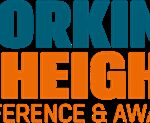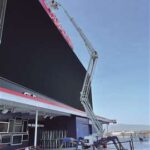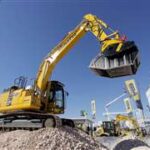Understanding OSHA’s 2025 Scissor Lift Harness Requirements
A scissor lift harness is one of the most crucial safety tools available, providing protection for workers operating at height. These devices are designed to minimize the risk of falls, and their importance is underscored by the strict requirements set by the Occupational Safety and Health Administration (OSHA). In this article, we will break down when and why scissor lift harnesses are needed, and the guidelines for their safe use according to OSHA regulations.OSHA boom lift regulations also apply to operators and specify the requirements for using fall protection while working from these types of lifts, ensuring the safety of workers from potential falls.
OSHA’s Requirements for Using a Scissor Lift Harness
OSHA’s 2025 guidelines clarify the conditions under which workers must wear a safety harness while operating scissor lifts. While OSHA’s regulation 1926.451(g) outlines when and how fall protection should be implemented, there remains some confusion about whether a harness is necessary on scissor lifts.
The answer varies depending on the situation, but generally, OSHA requires a harness when the worker’s safety is compromised by inadequate fall protection, or when an employee leaves the platform. While OSHA does not explicitly mandate harnesses for scissor lifts with a proper guardrail system, it’s always safer to use one.
Employers must ensure workers are trained and certified before using scissor lifts, and failure to comply can result in hefty fines.
Types of Scissor Lift Harnesses
There are two types of harnesses that are commonly used for scissor lifts: full-body harnesses with fall restraint systems or self-retracting lifeline/lanyard systems. These harnesses can be connected to the scissor lift using a lanyard. In the event of a fall, the harness catches the worker, preventing a dangerous drop and reducing the risk of injury.
It’s crucial that the harness system is used correctly and anchored securely to ensure worker safety. Remember, scissor lifts are considered safer than other aerial lifts, but harnesses can make a significant difference when there’s a potential risk of falling.
OSHA Scissor Lift Safety: Guidelines for Proper Use
OSHA regulations state that harnesses are only necessary if a guardrail system is inadequate or if workers leave the platform while elevated. However, OSHA guidelines still emphasize the importance of fall protection training. Understanding how to respond to a fall can be a lifesaver.
Our training program covers how to use fall protection devices, as well as when to employ them. These guidelines are essential in reducing accidents and ensuring a safe working environment for both operators and on-site workers.
Common Misunderstandings about Scissor Lift Harnesses
There are several myths about the use of harnesses on scissor lifts:
-
Myth: A harness is never required on scissor lifts because they are like mobile scaffolds with guardrails. Reality: Even with guardrails in place, harnesses may still be necessary if the guardrail system is insufficient or if the worker is exposed to other fall risks.
-
Myth: Any harness will do for scissor lifts. Reality: The harness system must be designed specifically for fall restraint use. Harnesses that are not rated for fall restraint can cause serious injury during a fall.
-
Myth: Harnesses only need to be inspected once a year. Reality: Harnesses must be inspected before each use for signs of wear or damage to ensure maximum protection.
Why Invest in Scissor Lift Fall Protection Training
Investing in fall protection training is critical for preventing accidents. While safety harnesses are essential, they are just one part of a comprehensive fall protection system. CertifyMeOnline.net offers a 100% OSHA-compliant training program that teaches workers how to use scissor lift harnesses and other protective equipment. The program covers the correct application of fall protection, the different types of harnesses, and how to inspect and maintain these safety tools.
Employer Responsibilities for Scissor Lift Safety
Employers are legally required to ensure that scissor lift operators are properly trained before they begin using equipment. This includes training on how to operate the lift, recognizing hazards, and following safety protocols. Employers must also ensure that equipment is regularly maintained, with all safety features functioning properly. Clear guidelines must be in place for when and how harnesses should be used, and employers must ensure that workers understand the importance of adhering to these protocols.
Frequently Asked Questions (FAQs)
Do workers need to wear a harness every time they use a scissor lift? Not necessarily. OSHA doesn’t always require harnesses if the scissor lift has a robust guardrail system. However, if the guardrails are insufficient, or if the worker is at risk of falling, a harness is required.
At what height is a harness required on a scissor lift? A harness is typically required when working at heights greater than six feet, especially if no adequate guardrail system is in place.
Why is it recommended to use a harness even when OSHA doesn’t require it? Even if OSHA guidelines don’t mandate a harness, using one provides an added layer of protection. Falls can happen unexpectedly, and wearing a harness could be the difference between life and death.




